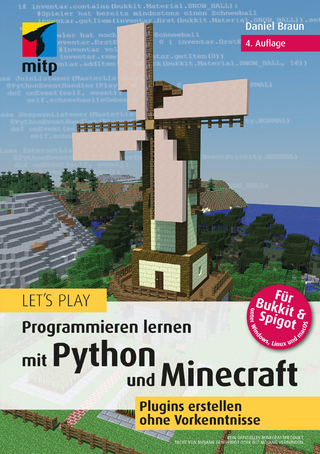
Physically Based Shader Development for Unity 2017
Apress (Verlag)
978-1-4842-3308-5 (ISBN)
Physically Based Shader Development for Unity 2017 discusses artistic choices, presenting various techniques (such as translucency and subsurface scattering) and BRDFs (Oren-Nayar, Cook-Torrance, and Ashikhmin-Shirley), and what they can be used for. Finally you’ll cover the importance of optimizing your code by developing approximations, which achieve similar end results, but are computationally cheaper.
By the end of your journey you’ll be able to develop the look of your game or Unity-rendered animated short so that it looks both unique and impressively realistic, thanks to your own custom lighting system.
What You Will Learn
Master shader programming
Gain all you need to know about physically based shading
Take almost full control of the shader subsystem
Discover what you can achieve with that control
Implement a custom physically based lighting system and examine the logic behind every choice
Who This Book Is For
Most game developers (both indie and AA) that use Unity and technical artists who are responsible for the final look of a game.
A Game Developer, Functional Programmer, and Speaker at various programming conferences, Claudia Doppioslash writes about Graphics Programming in Unity and in Rust and about Functional Programming. She’s been programming for many years now: starting from mobile development for iOS and Android, she went on to Game Development, spending most of her time developing custom shader lighting systems for Unity. Now she’s applying Functional Programming to the front-end, with Elm, Purescript and Haskell. She is a moderately Smug Lisp Weenie, and she hasn’t given up making Functional Programming useful for Game Development yet.
Chapter 1: How Shader Development Works.- Chapter 2: Your first Unity Shader.- Chapter 3: Your first Lighting Unity shader.- Chapter 4: What is Physically Based Shading?.- Chapter 5: Your first Physically Based Shader.- Chapter 6: Your first Image Effect.- Chapter 7: HDR, Tone Mapping and Color Grading.- Chapter 8: The Ethology of BRDFs.- Chapter 9: The Implementation of BRDFs.- Chapter 10: Approximate your BRDFs.- Chapter 11: How the Standard Shader works.- Chapter 12: The Unity Standard Shader Subsystems, and What They Can Do for You.- Chapter 13: Hooking into the Unity Shader Subsystems.- Chapter 14: Reflections and Cube Maps.- Chapter 15: Making Shaders Artists Will Use.- Chapter 16: Code Complexity and Ubershaders.- Chapter 17: When Shading Goes Wrong, Check The Models.- Chapter 18: Resources to Keep Up with the Bleeding Edge, and How to Read Them.
| Erscheinungsdatum | 05.01.2018 |
|---|---|
| Zusatzinfo | 75 Illustrations, color; 38 Illustrations, black and white; XXIII, 232 p. 113 illus., 75 illus. in color. |
| Verlagsort | Berkley |
| Sprache | englisch |
| Maße | 178 x 254 mm |
| Themenwelt | Informatik ► Software Entwicklung ► Spieleprogrammierung |
| Schlagworte | Ashikhmin-Shirley • BRDFs • Cook-Torrance • DirectX • Game of Thrones • GLSL • OpenGL • Oren-Nayar • PBS • physical based shader • ShaderLab • Vulkan |
| ISBN-10 | 1-4842-3308-5 / 1484233085 |
| ISBN-13 | 978-1-4842-3308-5 / 9781484233085 |
| Zustand | Neuware |
| Informationen gemäß Produktsicherheitsverordnung (GPSR) | |
| Haben Sie eine Frage zum Produkt? |
aus dem Bereich


